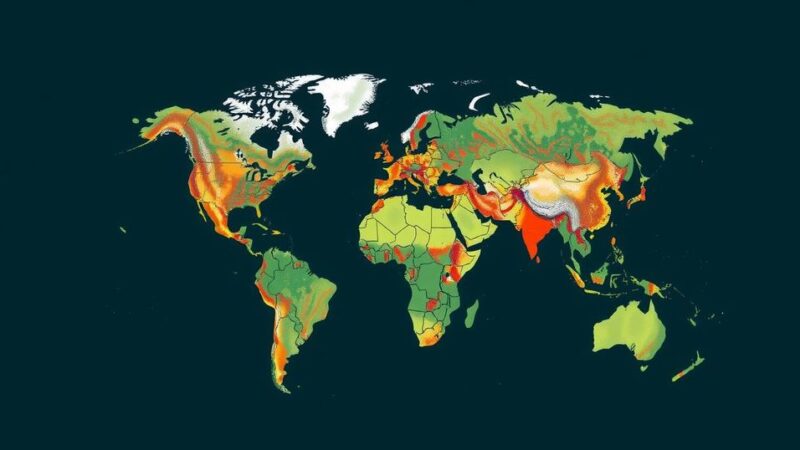An Israeli airstrike on Palmyra, Syria, has killed at least 36 people and injured 50, targeting residential areas from al-Tanf. This incident is part of a broader pattern involving increased Israeli military operations against Iranian-linked groups as regional tensions rise amidst ongoing conflicts with Hezbollah and in Gaza.
A recent Israeli airstrike on the Syrian city of Palmyra has resulted in at least 36 fatalities and 50 injuries, as reported by Syrian state media. This attack, which targeted residential buildings, was launched from the al-Tanf region, a contested area in eastern Syria near the Iraqi border, under U.S. control. According to Syria’s Ministry of Defence, the assault caused significant material damage alongside human casualties. Israeli authorities have not officially commented on the strike, but it is consistent with their ongoing military operations against Iranian-affiliated factions in Syria. The frequency of such attacks has notably increased following the escalation of hostilities with Hezbollah and the renewed conflict in Gaza since October 7, 2023.
Palmyra, recognized for its historical significance as a UNESCO World Heritage Site, has been previously afflicted by violence related to the Syrian civil conflict, including destruction by ISIS. Amidst this backdrop, the attack occurs during ongoing diplomatic efforts for a ceasefire between Hezbollah and Israel, led by U.S. envoy Amos Hochstein. Hezbollah’s leadership has expressed its determination to resist Israeli incursions and maintain Lebanese sovereignty, indicating that any potential ceasefire agreement must respect this principle. They have also committed to retaliatory actions against Israeli strikes, pointing to an escalating cycle of violence in the region. The Israeli government, on the other hand, has emphasized the need for any ceasefire agreement to enable ongoing operations against Hezbollah to prevent the rearmament of their forces along the border. The tensions culminate further as reports indicate ongoing Israeli military activities in both Lebanon and Syria, with increasing casualties reported on both sides of the conflict.
The situation in Syria, particularly in Palmyra, reflects broader geopolitical tensions involving Israel, Iran, Hezbollah, and the United States. Israel has been actively targeting Iranian military goals in Syria since the onset of the Syrian civil war in 2011, viewing Iranian presence as a significant threat. With the intensification of conflict in Gaza and increased hostilities with Hezbollah since October 2023, Israel has accelerated its military operations. The historical context of Palmyra, known for its ancient ruins, has seen it transformed into a battleground, exacerbating the humanitarian crisis in Syria. The latest violence illustrates the interconnected nature of the conflicts affecting the wider Middle Eastern region, involving multiple actors with varying interests.
The recent airstrike in Palmyra, resulting in numerous casualties, encapsulates the ongoing volatility in the region influenced by the Israeli-Iranian standoff and the continuing hostilities with Hezbollah. As military actions escalate and diplomatic efforts for a ceasefire persist, the situation remains precarious, reflecting the broader implications for regional security and the humanitarian toll of the prolonged conflicts. The urgent need for a resolution is evident to halt further violence and stabilize the situation.
Original Source: www.aljazeera.com

